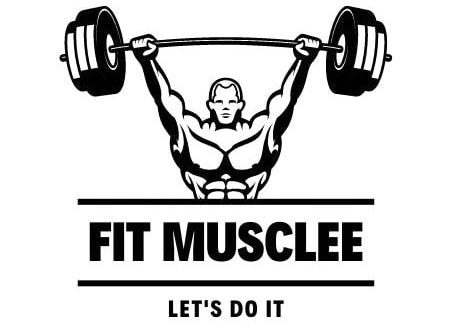Here is your complete guide to metcon vs hiit.
Introduction to Metcon vs HIIT
In the world of fitness, two popular workout styles have emerged as favorites among enthusiasts: Metcon and HIIT. Both methods promise to deliver effective results, but they do so in different ways. Understanding the nuances between metcon vs HIIT is crucial for anyone looking to optimize their fitness routine. In this article, we will explore the definitions, benefits, and differences between these two training styles, helping you make an informed decision for your fitness journey.
As we delve into metcon vs HIIT, we will cover everything from workout structures to the physiological benefits of each method. By the end of this article, you will have a comprehensive understanding of both styles and how to incorporate them into your routine effectively.
Understanding Metcon
Metcon, short for metabolic conditioning, is a training style designed to improve the efficiency of your energy systems. It combines various exercises aimed at enhancing both aerobic and anaerobic capacities. Typically, Metcon workouts are structured as circuits, where you perform a series of exercises with minimal rest in between.
Key Components of Metcon Workouts
- Circuit Training Structure: Metcon workouts often involve multiple exercises performed back-to-back, targeting different muscle groups.
- Types of Exercises Included: These workouts can include a mix of strength training, cardio, and bodyweight exercises.
Physiological Benefits of Metcon
- Enhanced Energy Systems: Metcon workouts are designed to improve both anaerobic and aerobic systems, leading to better overall fitness.
- Increased Metabolic Rate Post-Exercise: Known as EPOC (Excess Post-exercise Oxygen Consumption), Metcon can keep your metabolism elevated long after the workout is over.
Common Metcon Exercises
Here are some common exercises you might find in a Metcon workout:
| Exercise | Benefits |
|---|---|
| DB Thrusters | Full-body strength and endurance |
| Pull-Ups | Upper body strength |
| Box Jumps | Explosive power and leg strength |
| Kettlebell Swings | Cardiovascular fitness and strength |
| Burpees | Full-body conditioning |
Understanding HIIT
HIIT, or high-intensity interval training, is a workout style characterized by short bursts of intense exercise followed by rest or low-intensity periods. HIIT has gained immense popularity due to its effectiveness in burning calories and improving cardiovascular fitness in a shorter amount of time.
Key Components of HIIT Workouts
- Structure of Intervals: HIIT workouts consist of alternating high-intensity efforts (e.g., sprinting) with recovery periods (e.g., walking).
- Types of Exercises Included: These workouts can include a variety of exercises, such as sprints, cycling, and bodyweight movements.
Physiological Benefits of HIIT
- Maximized Caloric Burn: HIIT can burn more calories in a shorter duration compared to traditional workouts.
- Improved Cardiovascular Health: Regular HIIT training can lead to significant improvements in heart health and endurance.
Common HIIT Exercises
Here are some common exercises you might find in a HIIT workout:
| Exercise | Benefits |
|---|---|
| Sprint Intervals | Builds speed and cardiovascular fitness |
| Cycling Sprints | Low-impact cardio and leg strength |
| Burpees | Full-body conditioning |
| Jump Squats | Explosive leg strength |
| Mountain Climbers | Core strength and cardiovascular fitness |
Key Differences Between Metcon vs HIIT
Workout Structure: Metcon vs HIIT
- Metcon: Involves circuit training with minimal rest between exercises, focusing on a variety of movements.
- HIIT: Consists of alternating between high-intensity bursts and recovery periods, often with fewer exercises.
Focus and Goals: Metcon vs HIIT
- Metcon: Primarily aimed at improving overall fitness and endurance.
- HIIT: Focused on fat loss and cardiovascular improvement, often in a shorter time frame.
Recovery and Adaptation
- Metcon: May require longer recovery times due to the intensity and variety of exercises.
- HIIT: Generally allows for shorter recovery times, but the intensity can be taxing on the body.
Comparison Table
| Feature | Metcon | HIIT |
|---|---|---|
| Structure | Circuit training | Interval training |
| Intensity | Moderate to high | High |
| Duration | 20-40 minutes | 15-30 minutes |
| Focus | Overall fitness | Fat loss and cardiovascular health |
| Recovery Time | Longer | Shorter |
Choosing the Right Workout for You
Assessing Your Fitness Goals
When deciding between metcon vs HIIT, it’s essential to consider your personal fitness goals:
- Weight Loss: HIIT may be more effective for quick fat loss.
- Muscle Gain: Metcon can help build strength while improving endurance.
- Endurance Training: Both can be beneficial, but Metcon may offer more variety.
When to Choose Metcon
- Ideal for those seeking a full-body workout.
- Suitable for individuals who enjoy circuit training and varied exercises.
- Great for CrossFit enthusiasts looking to improve overall fitness.
When to Choose HIIT
- Best for those with limited time who want maximum results.
- Ideal for improving cardiovascular fitness quickly.
- Perfect for individuals who enjoy high-intensity workouts.
Combining Both Workouts: Metcon vs HIIT
Incorporating both Metcon and HIIT into your routine can offer the best of both worlds. Here’s a sample weekly workout plan:
| Day | Workout Type |
|---|---|
| Monday | Metcon |
| Tuesday | HIIT |
| Wednesday | Rest |
| Thursday | Metcon |
| Friday | HIIT |
| Saturday | Active Recovery (Yoga, Light Cardio) |
| Sunday | Rest |
Common Mistakes to Avoid with Metcon vs HIIT Workouts
When incorporating Metcon and HIIT into your training routine, it’s important to be aware of some common mistakes that can hinder your progress and increase your risk of injury. Here are a few key things to avoid:
Doing Too Much, Too Often
One of the biggest mistakes people make is overdoing Metcon and HIIT workouts. While these training styles are effective for improving fitness, they can also be very taxing on the body. Doing too many high-intensity sessions per week, or pushing yourself too hard in each workout, can lead to overtraining, burnout, and increased risk of injury.
To avoid this, limit your Metcon and HIIT workouts to 2-3 times per week, with at least one day of rest in between. Keep each session under 20-30 minutes and adjust the intensity based on your current fitness level and recovery status.
Neglecting Other Training Modalities
Another common mistake is focusing solely on Metcon and HIIT while neglecting other important aspects of fitness, such as strength training, mobility work, and skill development. While these high-intensity workouts can improve endurance and power, they cannot replace the benefits of a well-rounded training program.
Make sure to balance your Metcon and HIIT workouts with other training modalities to ensure you are developing all the necessary components of fitness, including strength, flexibility, and movement quality.
Sacrificing Form for Intensity
When performing Metcon and HIIT workouts, it’s crucial to maintain proper form and technique, even when working at a high intensity. Compromising form in an effort to go faster or lift heavier can increase your risk of injury and limit the effectiveness of the exercises.
Focus on mastering the basics of each exercise before adding speed or load. If you feel your form starting to break down during a workout, slow down, reduce the intensity, or take a break to maintain proper mechanics.
By being mindful of these common pitfalls and making adjustments as needed, you can safely and effectively incorporate Metcon and HIIT into your training routine to achieve your fitness goals.
FAQs about Metcon vs HIIT
What is better for weight loss, Metcon or HIIT?
Both Metcon and HIIT can be effective for weight loss. However, HIIT often burns more calories in a shorter amount of time, making it a popular choice for those focused on fat loss.
Read Also: Stevia Sweetened Coffee Creamer.
Can beginners do Metcon or HIIT?
Yes, both Metcon and HIIT can be adapted for beginners. Start with lower intensity and simpler movements, gradually increasing the complexity and intensity as you become more comfortable.
Read Also: Fasting Friendly Coffee Creamer.
How often should I do Metcon or HIIT workouts?
It is generally recommended to include Metcon or HIIT workouts 2-3 times per week, allowing for recovery days in between to prevent overtraining.
Read Also: Keto Diet Coffee with Cream.
Are there specific diets for Metcon or HIIT training?
While there are no specific diets for Metcon or HIIT, a balanced diet rich in protein, healthy fats, and carbohydrates will support your training and recovery.
Read Also: Whey Protein on Vegan Diet.
What equipment do I need for Metcon and HIIT?
- Metcon: Dumbbells, kettlebells, resistance bands, and bodyweight.
- HIIT: Minimal equipment is needed; bodyweight exercises, jump ropes, and medicine balls are common.
Read Also: Keto Diet Cooking Oils.
Conclusion
In conclusion, both metcon and HIIT offer unique benefits that can help you achieve your fitness goals. By understanding the differences between these two workout styles, you can make an informed decision about which is best for you. Whether you choose to focus on Metcon for overall fitness or HIIT for quick fat loss, incorporating these workouts into your routine will undoubtedly lead to improved health and fitness.
Read Also: Benefits from Mangoes.
Ultimately, the best workout is the one that you enjoy and can stick with. So, don’t hesitate to mix and match these styles or even try new exercises to keep your routine fresh and engaging. Happy training!
Read Also: Burn Boot Camp vs CrossFit.
References
- Meeks, J. (n.d.). What is the difference between Metcon and HIIT, and why do they matter in your training? Precor. Retrieved from Precor
- HIIT vs. MetCon: What’s the Difference? O2Performance. Retrieved from O2Performance
- Which is Better for Your Fitness Goals? Metabolic Conditioning Vs. High Intensity Interval Training. Flex Club. Retrieved from Flex Club
- MetCon vs HIIT Workout. Power Gym. Retrieved from Power Gym
- Changes in body composition, bone metabolism, strength, and skill-specific performance resulting from 16-weeks of HIFT. National Institutes of Health. Retrieved from NIH
- Metabolic Conditioning: Instructions, Examples, Pros, and Cons. Healthline. Retrieved from Healthline
- Metabolic Conditioning: Why You Should Do This Instead of Cardio. Fitness Progression. Retrieved from Fitness Progression

